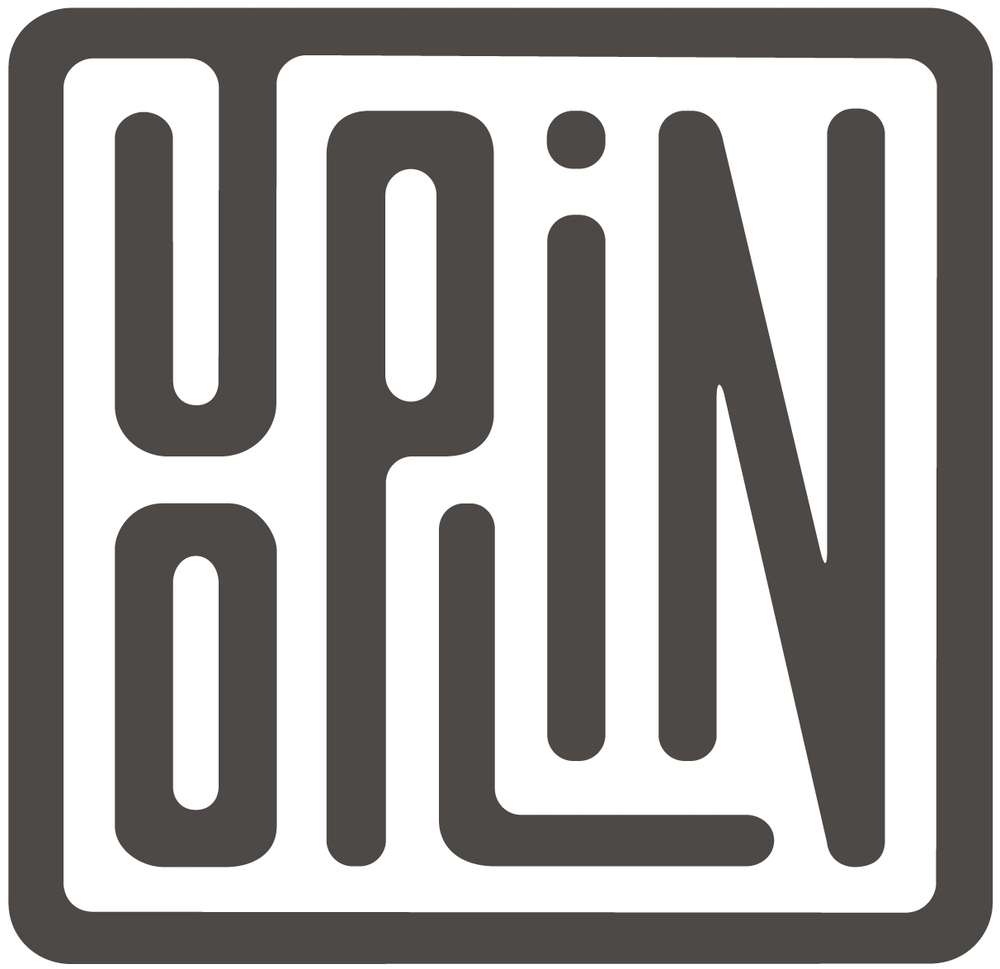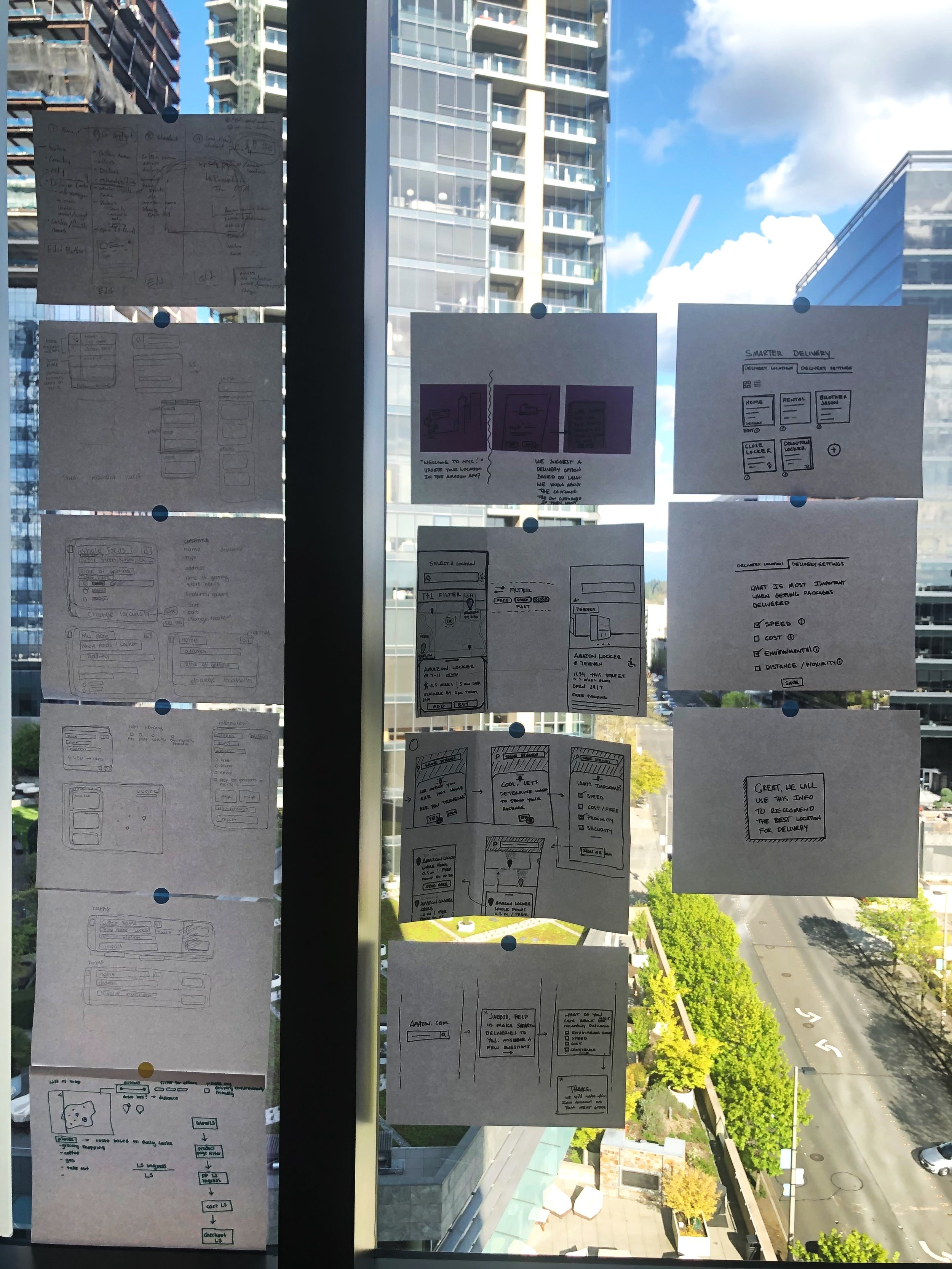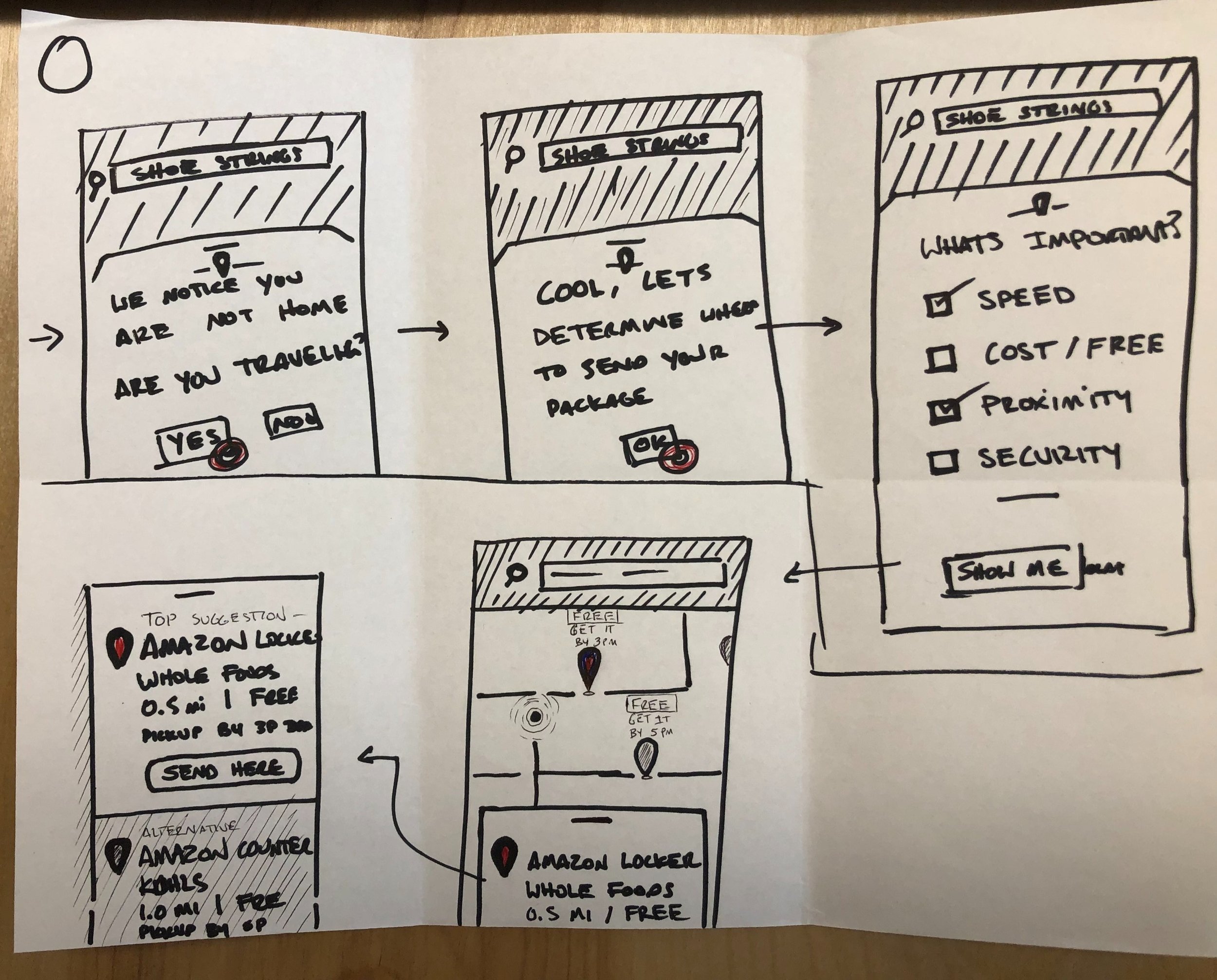Amazon Hub
Amazon 2022
Amazon Hub is part of the Last Mile organization, providing a safe and secure alternative to home delivery and returns through our pickup network. Our service operates within a connected ecosystem of delivery drivers, associates, and business partners including CVS, property managers, and package locker technicians. Every participant in this ecosystem relies on seamless physical and digital interactions through specialized software, physical products, and workflows that ensure on-time, secure package pickup and frictionless returns for Amazon customers.
The Challenge
Build an experience design team and practice that begins with understanding customers and the needs of critical participants, collaborates to deliver exceptional Hub experiences, and innovates for the future.
I approached this challenge using a framework built on three essential ingredients for any successful design team or organization: People, Practice, and Process.
Part of the design team stuffed in an elevator together during an
innovation sprint.
When I assumed the design leadership role for Amazon Hub, experience delivery work across the ecosystem was already underway. Prior to my hiring, an organizational shift had left the team with only one designer despite having a roadmap requiring ten designers. We needed to move quickly to address gaps, prioritize staffing needs, and build a robust recruiting pipeline.
As I began understanding the digital and physical design needs for Amazon Hub, I recognized that service design and design program management were essential disciplines needed alongside core product design. Fortunately, I inherited backfill roles and worked with my recruiting team to build a pipeline while also leveraging my professional network.
The goal was to build an embedded model where designers would partner closely with product teams throughout the entire product development lifecycle—from problem identification through design, implementation, and launch. This approach would expand design's role as a driver and facilitator of innovation and strategy, providing a sustainable source of fuel for innovation. We aimed to answer two critical questions: "What is the right experience for this feature/technology/product?" and "What is the right feature/technology/product for the experience we are looking to create?"
I believe in building diverse teams with broad skills. When seeking the right hires at appropriate levels, I knew they needed core design skills while also having the ability to influence broader experience design transformation within the organization. In 2022, I reviewed over 200 potential candidates' resumes and portfolios, conducted 60 phone screens, interviewed 25 candidates, and hired 6. It was a strong start. To truly achieve an effective embedded model, additional hiring would be necessary in 2023.
Practice
The goal was to build a human-centered design practice that identifies key customers or users and puts their needs and outcomes at the center, thus aligning teams around those outcomes. This practice starts with understanding our customers, explores potential solutions and north star experiences, and builds through collaboration with other disciplines. We utilized a core Last Mile Experience Design mechanism called Durable Customer Outcomes.
We discovered that beyond the Amazon Retail Customer, we needed to consider four other vital customers/users and design specific outcomes for each: Delivery Drivers; Associates who work in Hub locations; technicians who install and service locations; and partners such as CVS and Kohl's who have Hub locations in and around their businesses.
During 2022, we leveraged design research and service design methods to understand key participants in the Hub ecosystem, map their journeys, identify Durable Customer Outcomes, and externalize this knowledge through Service Blueprints and other artifacts that made the experience tangible for the team and partners.
Through our qualitative and quantitative research, we discovered that Retail Customers receive unique value from the Amazon Hub experience. We created convenience and necessity archetypes to further our shared knowledge and understanding of the customer.
A critical phase of our practice was creation and exploration. With insights and knowledge gained from key participants and users in the Hub ecosystem, we partnered with product and tech teams to influence product delivery and integrated Horizon Sprints to envision the future and drive innovation.
Amazon Hub Retail Customer Service Blueprint.
Process
Amazon Hub Retail Customer Archetypes
A solid process for human-centered design is essential to operationalize the practice and empower talented people to deliver. With Amazon Hub, we built an Agile for Design process. To support agile design and product development lifecycles, embedded designers run a dedicated UX sprint and backlog in parallel to engineering sprints. This creates alignment on work prioritization and establishes a cadence for the broader team and partners to contribute with questions, suggestions, and feedback before the design is finalized and prepared for handoff.
Within this process, we reserve two weeks or one sprint every quarter to envision the future. We call these Horizon Sprints. Horizon sprints focus on working backward to propose options and experiments that continuously feed the next planning cycle for concepts that may be higher risk or require cross-business coordination or technical exploration. The horizon mechanism unlocks design's unique power: to explore options relatively quickly and frugally to evaluate the value, risk, and effort of future plans. Horizon Sprints provide customer learning and inform and accelerate innovation while reducing churn.
Existing Amazon Hub customer interaction points.
Delivery ride-a-long images and artifacts depicting the effort to understand the end to end experience, key participants, and customer archetypes.
Horizon Sprint images and artifacts



































